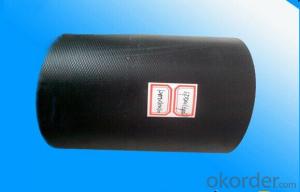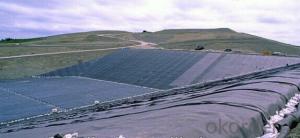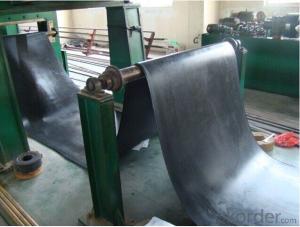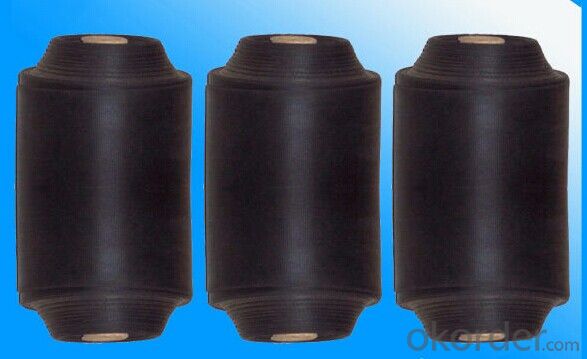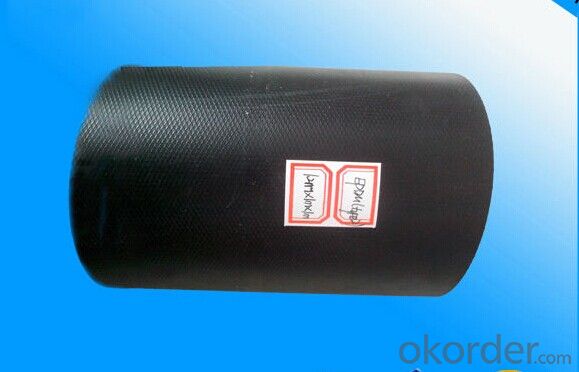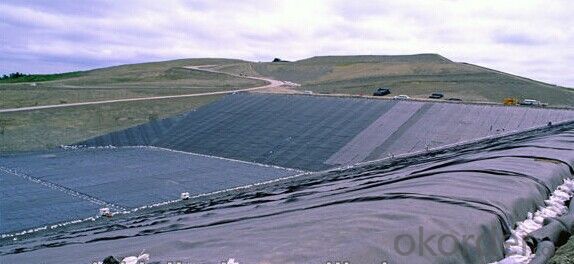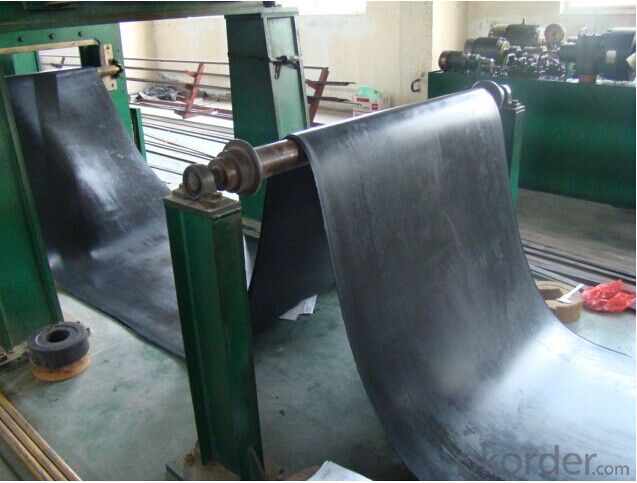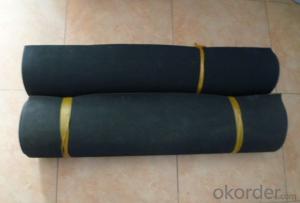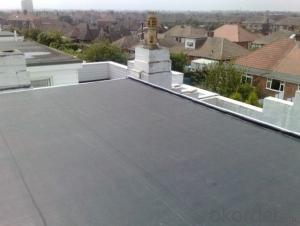EPDM Coiled Rubber Waterproof Membrane Manufacturer
- Loading Port:
- Qingdao
- Payment Terms:
- TT OR LC
- Min Order Qty:
- 2000 m²
- Supply Capability:
- 10000 m²/month
OKorder Service Pledge
OKorder Financial Service
You Might Also Like
EPDM Coiled Rubber Waterproof Membrane
1. Introduction
This waterproof coiled material is of high elasticity with best performance among high polymer waterproof coiled material in the world, it is also the most typical one in the world.
Waterproof coiled material made of ternary ethylene-pro-pylene rubber of DHK is produced with the use of the most advanced continuous extrusion and vulcanization technology and related equipments which are specially designed for production of such product. It is good in compactness, without bubble and performance difference in length and breadth, performances reach or exceed the demands of GB 18173.1-2000 standard.
2. Characteristics
1.Excellent weather resistance, durability and size stability
2.Good adaptability to high and low temperature, UV resistant and anti-corrosion
3. High tensile strength and good elongation, accommodating to structure movement.
4. Easy installation, solid joint, and no environmental pollution
5. Good rooting penetration resistance.
6. Service life up to 50 years
3. Specification:
Type | EPDM Waterproof Membrane | |||
Material | EPDM Rubber | |||
Thickness | 1.0mm | 1.2mm | 1.5mm | 2.0mm |
Size | 1.2m(width) * 20m(length)/roll | |||
Type | Vulcanized | |||
Pattern | Non-reinforced(homogeneous) | |||
Packing | 24sqm--80sqm/roll, with plastic bag | |||
Color | Black | |||
Application | Roofs, basement, pond, Lake, steel structure roof, swimming pool, underground, tunnel, etc | |||
5. Some photos:
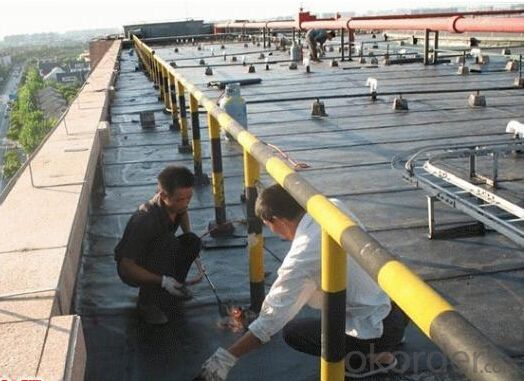
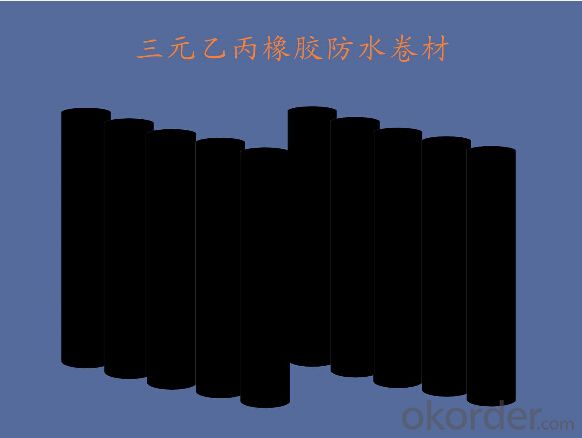
- Q: Can a waterproofing membrane be used in permanent or long-term structures?
- Yes, a waterproofing membrane can be used in permanent or long-term structures. Waterproofing membranes are designed to provide durable and long-lasting protection against water intrusion. They are commonly used in various construction applications such as basements, roofs, foundations, and underground structures to prevent water damage and leakage. These membranes are engineered to withstand the test of time and can effectively extend the lifespan of a structure by ensuring its integrity and preventing moisture-related issues.
- Q: Are waterproofing membranes resistant to mold and mildew?
- Yes, waterproofing membranes are resistant to mold and mildew. They create a barrier that prevents moisture from seeping through, which helps inhibit the growth of mold and mildew.
- Q: Does a waterproofing membrane require any special tools for installation?
- Yes, installing a waterproofing membrane typically requires special tools such as a trowel, brush or roller for application, utility knife for cutting the membrane, and a heat gun for seam sealing.
- Q: Is a waterproofing membrane breathable?
- Typically, a waterproofing membrane is not breathable. Its main objective is to form a barrier that stops water or moisture from entering. To accomplish this, the membrane is constructed to be impermeable to water molecules. Nonetheless, this impermeability also restricts the passage of air and moisture vapor, leading to a lack of breathability.
- Q: Is a waterproofing membrane resistant to solvents or chemical spills?
- Generally, waterproofing membranes tend to resist solvents and chemical spills. They are engineered to shield against water and other liquids, including solvents and chemicals. These membranes often consist of materials like PVC, TPO, or EPDM, which exhibit impressive resistance to different solvents and chemicals. Nevertheless, the degree of resistance can differ based on the membrane's type and composition. It is advisable to review the manufacturer's specifications and seek guidance from experts to confirm the membrane's compatibility with particular solvents or chemicals prior to installation.
- Q: Can a waterproofing membrane be used for mechanical rooms?
- A waterproofing membrane is suitable for mechanical rooms where various equipment and systems are housed. These rooms require protection from water damage. Waterproofing membranes create a barrier that prevents water from penetrating the structure, which could potentially harm the mechanical equipment. To ensure a watertight environment that extends the lifespan of the equipment and reduces the risk of water-related issues, apply the waterproofing membrane to the walls, floors, and even ceilings of the mechanical room. Moreover, waterproofing membranes also safeguard against other forms of moisture, such as condensation or high humidity levels, which can negatively impact the functionality of mechanical systems. In conclusion, utilizing a waterproofing membrane in mechanical rooms is a practical and effective method to safeguard the equipment and maintain a dry and operational environment.
- Q: Can a waterproofing membrane be used for plant rooms?
- Yes, a waterproofing membrane can be used for plant rooms. Plant rooms often house machinery and equipment that require protection from water and moisture. Using a waterproofing membrane can help prevent water damage to the plant room and the equipment inside. It creates a protective barrier that keeps water from penetrating the walls, floors, and ceilings of the plant room. This can be especially important in areas where there is a higher risk of water leaks or condensation. Waterproofing membranes are designed to withstand various environmental conditions and can provide long-lasting protection for plant rooms.
- Q: Can a waterproofing membrane be used on adobe block surfaces?
- Yes, a waterproofing membrane can be used on adobe block surfaces. Adobe blocks are made from a mixture of clay, sand, and straw, which can be susceptible to water damage. Applying a waterproofing membrane can help prevent water penetration and protect the adobe blocks from moisture-related issues such as cracking, erosion, or mold growth. It is important to ensure that the waterproofing membrane is compatible with adobe surfaces and follows the manufacturer's guidelines for application. Additionally, proper surface preparation and repair of any existing damage is crucial before applying the membrane to ensure its effectiveness.
- Q: How much does a waterproofing membrane cost?
- The cost of a waterproofing membrane can vary depending on factors such as the type of membrane, the size of the area to be waterproofed, and the brand. On average, you can expect to spend anywhere from $1 to $5 per square foot for the material and installation.
- Q: Can a waterproofing membrane be used for planter boxes?
- Yes, a waterproofing membrane can be used for planter boxes to prevent water leakage and protect the surrounding surfaces from moisture damage.
Send your message to us
EPDM Coiled Rubber Waterproof Membrane Manufacturer
- Loading Port:
- Qingdao
- Payment Terms:
- TT OR LC
- Min Order Qty:
- 2000 m²
- Supply Capability:
- 10000 m²/month
OKorder Service Pledge
OKorder Financial Service
Similar products
Hot products
Hot Searches
Related keywords

